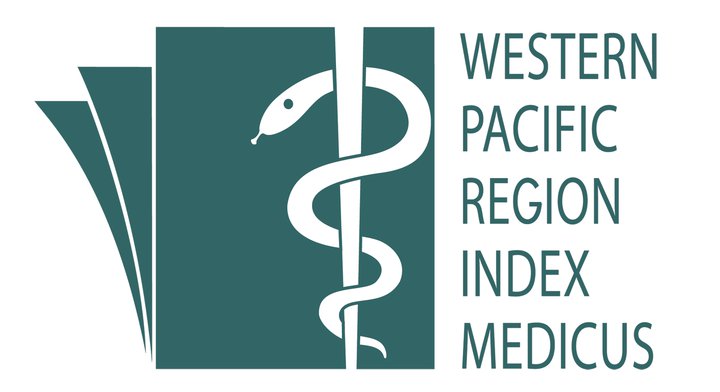Costs and Effectiveness of Ciprofloxacin and Ceftriaxone in Treatment of Typhoid Fever in Children in Thailand
Keywords:
Costs -Effectiveness -Ciprofloxacin - Ceftriaxone -Typhoid Fever -ChildrenAbstract
Introduction
The burden of typhoid fever remains high in impoverished settings, and increasing antibiotic resistance is making treatment costly. The purposes of this study were: to compare the costs and the effectiveness of typhoid programs between oral and injection treatments in pediatric patients at Songkhla Hospital.
Methods
This study was an incidence-based cost-of-illness analysis from providers’ perspective. Micro-costing approach was employed for calculating patient-specific data. The study was conducted in Songkhla Hospital in the southern part of Thailand from 2009 to 2010. The total number of the cases was 78. Patients taking antibiotics for 48 hours, and those suspected of having complicated typhoid fever like peritonitis, ileus, toxic encephalopathy were excluded. We collected and reviewed medical records. In all provisionally selected children, blood was drawn for complete blood count, widal test and blood culture. The statistics used in data analysis were descriptive statistics and the cost-effectiveness of typhoid treatment with the two methods was compared using independent t-test.
Results
The results of the study revealed that the average cost of typhoid treatment with oral Ciprofloxacin calculated with DRG was 3,301.88 baht which was lower than that of injection Ceftriaxone treatment calculated with DRG (3,615.05 baht). When the operation costs were considered, the results of the study remained the same, i.e. the treatment cost of typhoid with oral Ciprofloxacin was two times lower than that with injection Ceftriaxone. The average cost of the oral treatment was 2,844.45 baht, and that of the injection treatment was 5,303.19 baht. Regarding the effectiveness of typhoid treatment with Ciprofloxacin measured from the time the fever was reduced, it was found that the body temperature of the two methods of treatment were used was not significantly different (p<.05). The patients on oral medications had a fever for an average of 3.36 days while those on injection treatment had a fever for an average of 3.76 days. However, the lengths of stay (LOS) of the two groups of patients were significantly different.
Conclusions
The results of this study showed that the cost-effectiveness of oral treatment was better than injection. Bedside, the patient and caregiver spent less time when oral treatment was administered than when injection treatment was used. Therefore, the direct cost for treatment was reduced and the indirect cost as a result from LOS was also reduced. Above all, the patient did not get pain from injection while the effectiveness of fever reduction was not different.
Â
References
Crump JA, Luby SP, Mintz ED. The global burden of typhoid fever. Bull world Health Organ. 2004; 82:346-353.
Bhan MK, Bhal R, Bhatnagar S. Typhoid and paratyphoid fever. Lancet. 2005; 366:749-62.
Murdoch DA, Banatvaia NA, Bone A, et al. Epidemic ciprofloxacin-resistant Salmonella typhi in Tajikistan. Lancet. 1998; 351:339.
Walia M, Gaind R, Mehta R, et al. Current perspectives of enteric fever in India—a hospital based study. Ann Trop Paediatr. 2005; 25:161-74.
Disease Control Division, Office of Provincial Public Health, Songkhla. Report on top 20 diseases. (Cited 14 May 2010) Available from: http://ww2.skho.moph.go.th/epid/
Annual Epidemiological Surveillance Report 2009-2011. JSSN 0875-6521. Available from: http://boe.moph.go.th/
Bureau of Epidemiology National Trustworthy and Competent Authority in Epidemiological Surveillance and Investigation. Situation of enteric and typhoid fever in Thailand in 2009 online 2010 (cited 14 May 2010). Available from: http://www.boe.moph.go.th/
Rastegan LA, Valid N, Ghaffarzadeh K, et al. In vitro activity of cefixime versus ceftrizoxime against Salmonella Typhi. Pathol Biol (Paris) 1997; 45:415
Memon IA, Biloo AG, Memon AG. An oral option for the treatment of multidrug resistant enteric fever in children, Southern Med J. 1997; 90:1204-1207.
Girgis NI, Sultan Y, Hanmado, et al. Comparison of the efficacy, safely and cost of cefixime, ceftriaxone and aztreonam in the treatment of multidrug-resistant Salmonella Typhi septicemia in children. Pediatr infect Dis.1995; 14:603.
Butha ZA, Khan IA, Molla AM. Therapy of multidrug-resistant typhoid fever with oral cefixime vs intravenous ceftriaxone. Pediatr infect Dis. 1994; 13:990.
White NJ, Dung NM, Vinh H, et al. Fluoroquinolone antibiotics in children with multidrug resistant typhoid. Lancet. 1996; 348:547.
Nair S, Unnikrishan M, Turner K, et al Molecular analysis of fluoroquinolone-resistant Salmonella Paratyphi A isolate, India. Emerg Infect Dis. 2006; 12:489-91.
Tran TH, Bethell PB, Nguyen TT, et al. Short course of ofloxacin to treatment of multidrug-resistant typhoid. Clin Infect Dis. 1995 ; 20:917.
Qamar Rizvi. Effectiveness of anti-typhoid drugs currently used in Pakistan. Pakistan J of surgery. 2007; 23(1) 57-64.
Limson BM. Short course quinolone therapy of Typhoid fever in developing countries. Drug. 1995; 49 (suppl2):13608.
Alam MN., Haq SA.,et al. Efficacy of ciprofloxacin in Enteric fever. Comparison of treatment in sensitive and MRD Salmonella. Am J trop Med Hyg. 1995; 53(3):306-311.
Asperilla MO, Smego RA Jr, Scott LK. Quinolone antibiotics in treatment of Salmonella infection. Rev Infec Dis.1990;12: 873-879.
Bhutla ZA. Therapeutic aspects of typhoidal salmonellosis in children: The Karachi experience. Ann trop Pediatr. 1996; 16:299.
Bhl R, Sinha A, Poulos C, Whittington D, Sazawal S, Kumar R et al. Costs of illness due to typhoid fever in an Indian urban slum community: implications for vaccination policy. J Health Popul Nutr.2004; 22:304-10.
Poulos C, Bahl R, Whittingto D, Bhan MK, Clemens JD, Acosta CJ. A cost-benefit analysis of typhoid fever immunization programmes in an Indian urban slum community. J Health Popul Nutr. 2004; 22:311-21.
Mayes, R. "The Origins, Development, and Passage of Medicare's Revolutionary Prospective Payment System" Journal of the History of Medicine and Allied Sciences .2007; 62(1): 21-55.
Parry CM, Heen TT, Dougan G, et al. Typhoid fever. New Eng J Med. 2002; 347(22):1770-82.
Butha ZA, Khan JA, Shadmani M. Failure of short-course ceftriaxone chemotherapy for multidrug resistant typhoid fever in children: a randomized controlled trail in Pakistan. Antimicrob Agents Chemother. 2000; 44:450.
Butha ZA, Khan JA, Shadmani M. Failure of short-course ceftriaxone chemotherapy for multidrug resistant typhoid fever in children: a randomized controlled trail in Pakistan. Antimicrob Agents Chemother. 2000 ; 44:450.
SmithMD.,Duong NM.Hoa NT.,et al Comparison of ofloxacin and ceftriaxone for short course treatment of Enteric fever. Antimicrob Agent chemother. 1994 ;38:1716.
Bethell PB, Heen TT, Phi LT, et al. Effects on growth of single short courses of fluoroquinolones. Arch Dis Child. 1996; 74:44.
Viret J, Cryz S. Protective immunity induced by typhoid fever and vaccination. Southeast Asian J. Trop Med Public Health. 1995; 26:150-159.
Roumagnac P, Weill Fx, Dolecek C,et al . Evolutionary history of Salmonella typhi. Science (New York, N Y) 2006; 314;5803;1301-1304.
Downloads
Additional Files
Published
How to Cite
Issue
Section
License
IJPHR applies the Creative Commons Attribution (CC BY) license to articles and other works we publish. If you submit your paper for publication by IJPHR, you agree to have the CC BY license applied to your work. Under this Open Access license, you as the author agree that anyone can reuse your article in whole or part for any purpose, for free, even for commercial purposes. Anyone may copy, distribute, or reuse the content as long as the author and original source are properly cited. This facilitates freedom in re-use and also ensures that IJPHR content can be mined without barriers for the needs of research.





